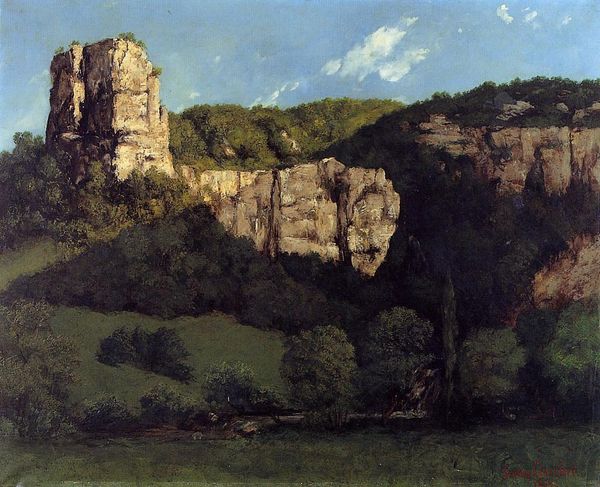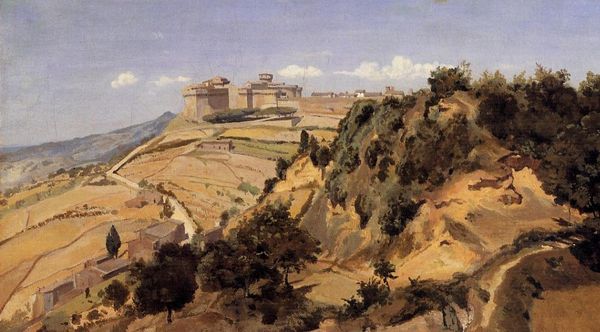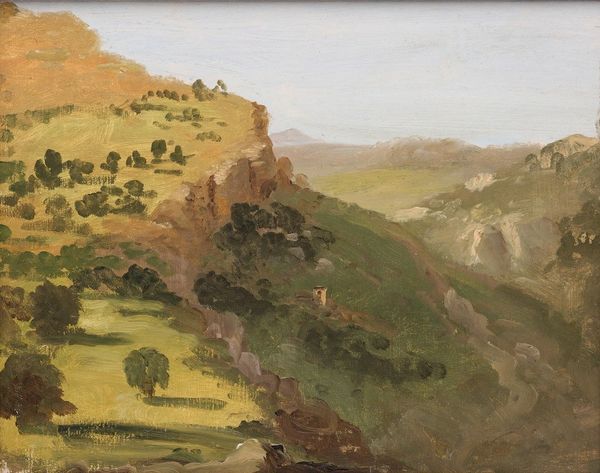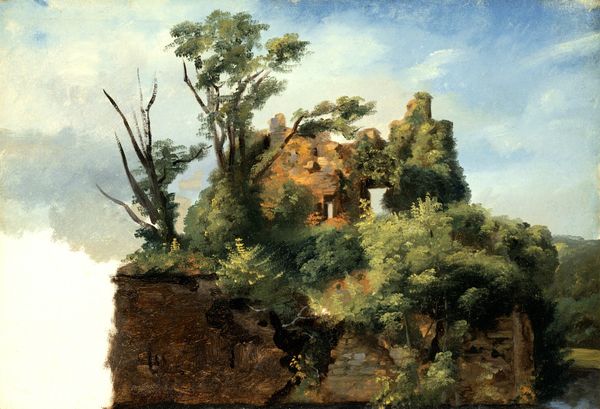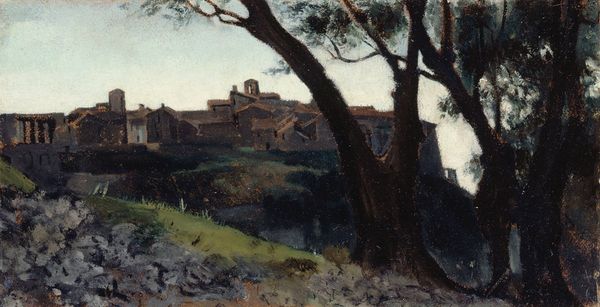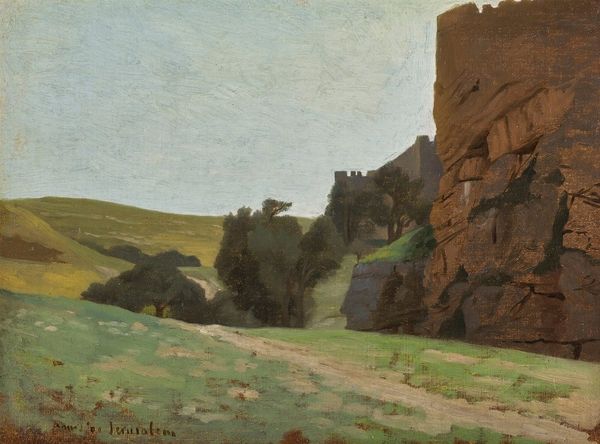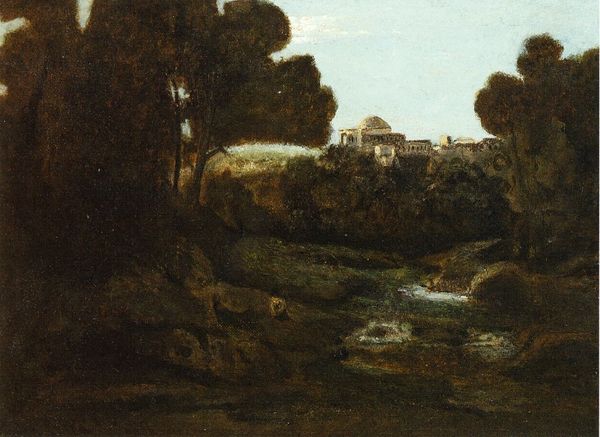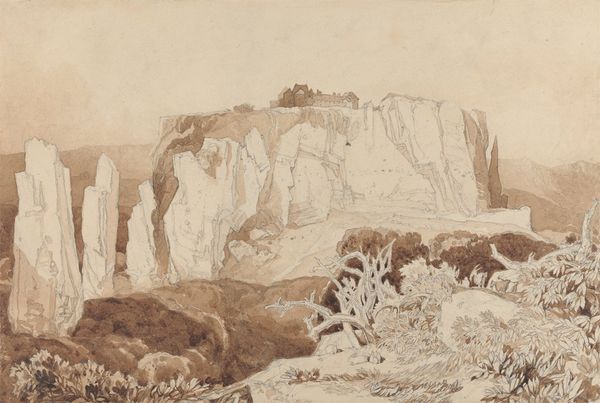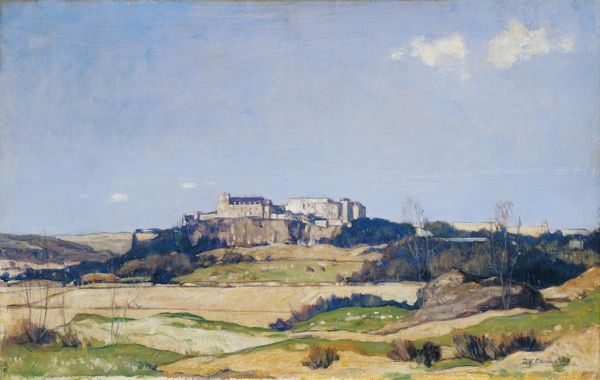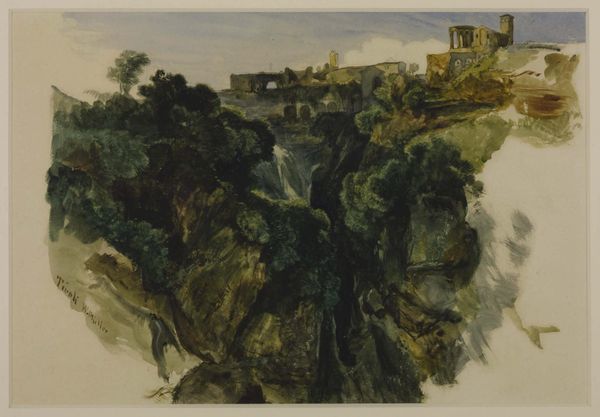
#
charcoal drawing
#
possibly oil pastel
#
oil painting
#
acrylic on canvas
#
underpainting
#
pastel chalk drawing
#
painting painterly
#
watercolour illustration
#
mixed medium
#
watercolor
Copyright: Public domain
Editor: This is "Naples. Buildings on a Cliff Top" by Thomas Jones, painted around 1782. It looks like a watercolor, capturing a Neapolitan landscape. The subdued colors create a somewhat mysterious and serene feeling, yet there's something unsettling about the imposing cliffs. What do you see in this piece? Curator: The subdued palette is quite intentional. Look at how the cliffs themselves seem to hold secrets. Do you see the shadowed recesses, almost like eyes staring back at the viewer? These could represent the subconscious, the hidden aspects of the city itself. Naples, after all, has always been a place of intense beauty juxtaposed with a deep, often tumultuous, history. The buildings perched precariously on the cliff’s edge could symbolize humanity’s constant negotiation with the overwhelming power of nature. Editor: That’s fascinating! I hadn’t considered the cliffs as having a personality or symbolism beyond just being part of the landscape. So the landscape reflects not just the city’s appearance, but its inner character as well? Curator: Precisely. The image becomes a psychological portrait. Think of the tradition of associating places with particular emotional or spiritual states. Does the blue above strike you as calming, or something else? The sky is relatively blank. Its role seems less meteorological and more that of a lid. The blue is almost constricting when seen this way. Editor: Now that you mention it, the muted sky does feel a bit heavy. I came expecting a light, airy view, but this feels much more weighted. Thank you! This image will stay with me. Curator: And hopefully help unlock the power of symbols. It's not just about what you see; it's about what it awakens.
Comments
No comments
Be the first to comment and join the conversation on the ultimate creative platform.

